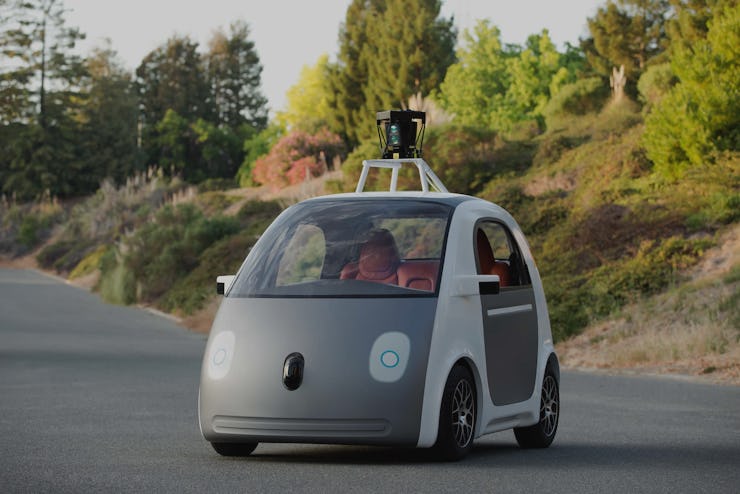Google's Patented "Sticky" Layer Aims to Protect Pedestrians Who Get Hit by Self-Driving Cars
Google's latest patent for a sticky outer layer might help pedestrians survive an automated automotive tragedy.

This week, Google was granted its patent for a solution to the fears of anyone who has ever worried about being struck by a self-driving car. While the idea may not stop a car from hitting someone, it aims to keep the victim from sustaining potentially worse, or fatal injuries. The patent, granted on May 17, is a simple solution that needs no app to function: an additional adhesive layer to the vehicle’s outer shell.
The idea is just as simple. Where most accidents that involve a pedestrian being hit can often result in the victim being flung elsewhere, or even back into traffic, the adhesive will act to “stick” the victim directly onto the car, avoiding further injury. The patent breaks it down in more scientific terms:
Ideally, the adhesive coating on the front portion of the vehicle may be activated on contact and will be able to adhere to the pedestrian nearly instantaneously. This instantaneous or nearly-instantaneous action may help to constrain the movement of the pedestrian, who may be carried on the front end of the vehicle until the driver of the vehicle (or the vehicle itself in the case of an autonomous vehicle) reacts to the incident and applies the brakes … As such, both the vehicle and pedestrian may come to a more gradual stop than if the pedestrian bounces off the vehicle.
While it is not yet confirmed that Google plans to implement the sticky outer layer to their own self-driving cars, the patent’s focus on this technology being made available for self-driving cars makes it obvious. The patent also states that the adhesive can potentially be used on other kinds of cars. The patent is needed at a time when pedestrian traffic fatalities are rising at a worrying pace, and is driven by the need to keep self-driving cars as safe in functionality as possible — even when they’re not.